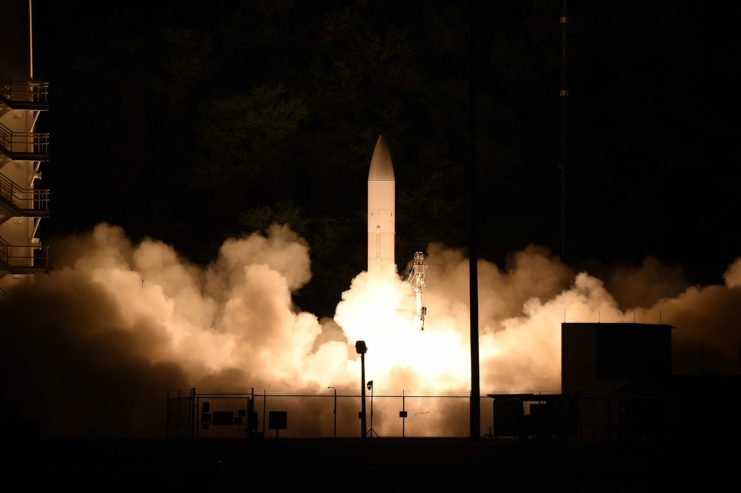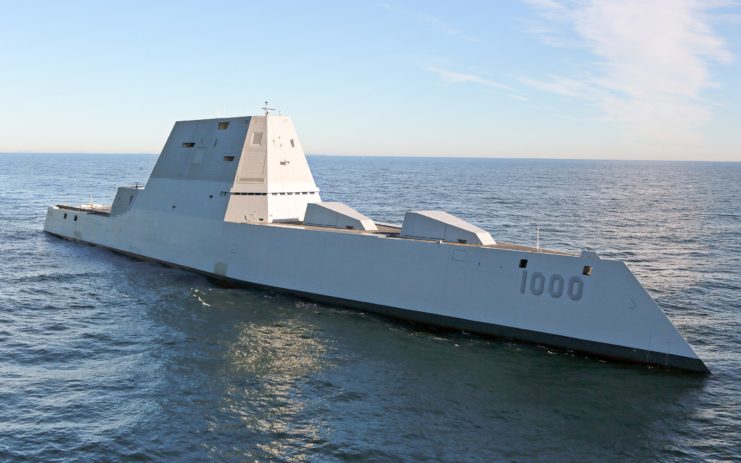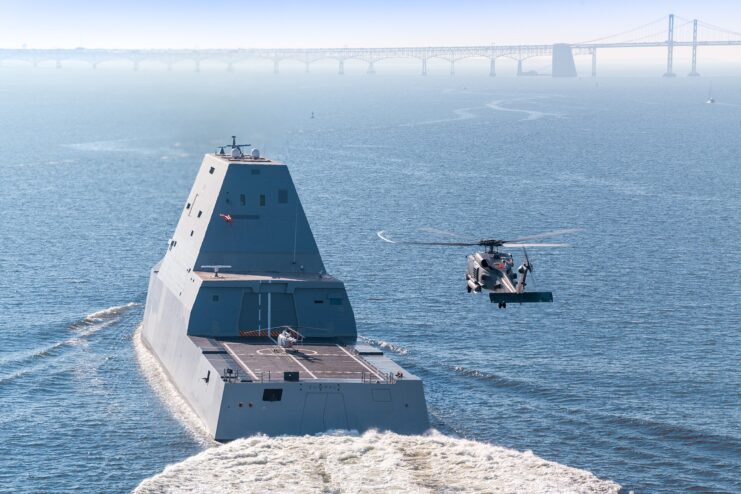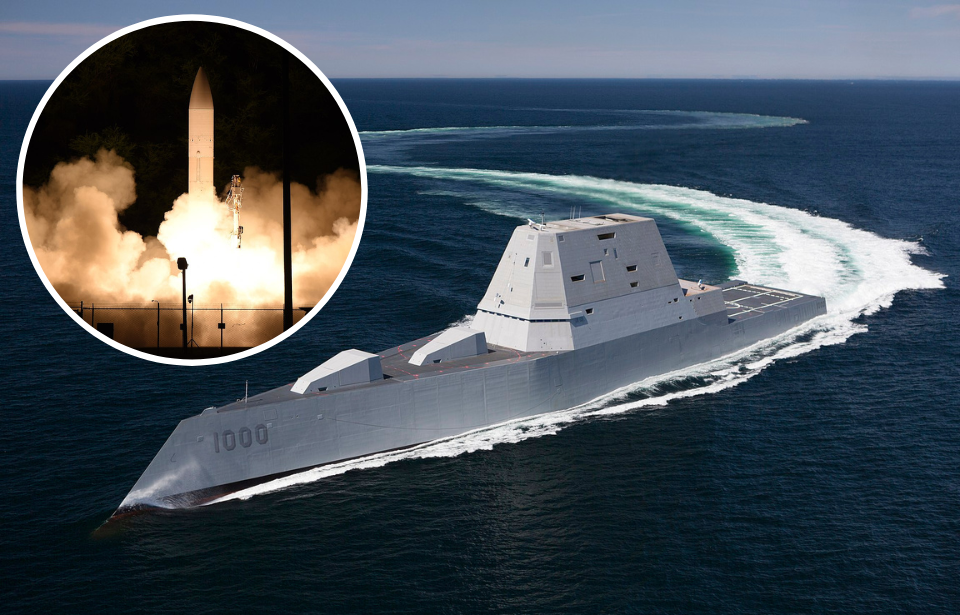
The Navy describes its hypersonic missile as a rapid-strike weapon designed for both precision and speed, developed in collaboration with the U.S. Army. The system uses a rocket booster to propel a specialized glide vehicle containing the warhead. After launch, the booster separates, allowing the glide vehicle to continue toward its target. While it does not accelerate further post-separation, it can maneuver mid-flight to alter its trajectory.
Its combination of extreme speed—surpassing Mach 5—and the ability to follow unpredictable paths makes interception highly challenging. Most existing missile defense systems are not capable of reliably countering such threats. Consequently, hypersonic weapons have become a key factor in the intensifying strategic competition among the United States, Russia, and China.

The Zumwalt-class of guided-missile destroyers include only three ships: USS Zumwalt (DDG-1000), Michael Monsoor (DDG-1001), and the soon-to-be-completed Lyndon B. Johnson (DDG-1002). The Navy received the lead ship in May 2016 and officially commissioned it later that year.
Northrop Grumman Ship Systems led the design, with Raytheon Company handling systems integration. Several other major defense contractors—General Dynamics Bath Iron Works, Lockheed Martin, BAE Systems Land and Armament, and Boeing—also contributed to the project.
Originally designed for operations in coastal waters, the Navy is now modifying the Zumwalt-class to function more effectively in open-ocean combat as long-range strike platforms. Their main weapon was supposed to be the Advanced Gun System with two 155 mm guns that used Long Range Land Attack Projectiles. However, with only three ships in the class, the cost of each round soared to nearly $1 million, forcing the Navy to rethink the plan.
A key obstacle in converting the Zumwalts to carry hypersonic missiles was that the missiles were still in development, and the ships’ existing vertical launch cells weren’t big enough to fit them
In mid-March 2021, the Navy reached out to defense contractors seeking proposals to modify the Zumwalt-class ships to accommodate hypersonic missiles. Their request called for an advanced payload module designed to hold the missiles in groups of three.
By August 2023, work had begun to retrofit the vessels, removing their 155 mm guns and installing four 87-inch missile tubes. Each tube will be capable of launching three Common Hypersonic Glide Body (C-HGB) missiles, giving the ships a strike range of approximately 1,724 miles.
Adm. Gilday also noted that the Navy is exploring how to leverage the Zumwalt-class’s robust power systems to deploy direct-energy weapons as a means of defending against new and evolving threats.

The title ship in the class was the first to receive the hypersonic upgrade, which reportedly cost $155 million. Work is anticipated to be completed sometime in 2025.
More from us: USS Idaho Is The First Ship To Bear That Name In 100 years
After outfitting all Zumwalt-class guided-missile destroyers with the hypersonic missiles, the Navy plans to add the weapons to its Virginia-class submarines. The goal is to have the missiles fully installed on the former by 2028.
